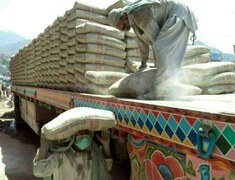Flashback, 9th March 2007. Buoyed by strong economic growth and facing no political challengers, the Musharraf regime went in over its head and suspended the chief justice of the apex court. Reason? The court’s intervention in executive domain. The civil unrest that followed dramatically changed the course of politics, ejecting the strongman out of power and “restoring constitutional supremacy” in the country.
Hubris – often more than anything else – proves to be the undoing of despots, whether elected or otherwise. Fourteen years on, Pakistan Steels Mills – whose proposed sell-off became the tipping point - still finds itself in a litigious mess, even as the most ardent supporters of the Lawyer’s Movement regret the rolling back of its privatization. Over-confidence, egged on by a disdain for participatory democracy, ends up painting even the best of policy measures poorly.
The events unfolding next door since last September are eerily similar. The protestors have been called ‘anti-national’, with imaginary links conjured up with ‘enemy intelligence agencies’. Modi’s reformist attempts to transform India’s agriculture by unshackling it from under state control suffer from severe lack of public trust in government’s ‘true intentions’ and ‘hidden agenda’. As the BJP is increasingly finding out, once a government is seen to be serving crony capitalism, there is often no going back. Even the RSS-linked rural lobby groups have opposed the farm bills, thwarting BJP’s hopes of firing up Hindutva street-power to fight back Punjab & Haryana based protestors.
Why would a majoritarian ruler feel the need to bulldoze laws through parliament or rely on ordinances for legislation? Did the Modi government sabotage itself by not even bothering to keep the pretence of consulting farmer advocacy groups? The question has no explanation, other than that the Teflon-coat always wears off eventually, no matter how populist a leader. Lesson number one then, is to maintain a healthy respect for opposition and political dialogue.
The second lesson is linked to centre-province relations, and failure to invest in modernization. The Modi government is right that the protests have a much more sinister origin than meets the eye. By attempting to exit the commodity procurement operations, the central government aims to free itself from obligations owed to state governments in the name of mandi (wholesale market) cess that run into hundreds of billions Indian rupees annually and have for years helped balance the budgets of these states.
States such as Punjab and Haryana that for decades have served as the breadbasket of the country by producing surplus grain have their economies build around agriculture, and agriculture-linked services. For decades, the central government has encouraged surplus production in these regions by extending input and output subsidies, allowing it to prevent food shortages elsewhere.
While the rest of the India modernized and even diversified into high-yield high-value crops, these states remained focused on cereal production. An overhaul of agricultural marketing system and centre-state relations overnight is set to cause fiscal deficit, job losses and displacement and is thus breeding resentment. These states will not give in without extracting their own pound of flesh first.
Before the introduction of farm bills, the need to overhaul India’s low yielding agriculture was felt not just by corporates but also by the farmer group themselves, rattled by depressed incomes, growing rural-urban gap, and the scourge of farmer suicides. But the way the legislation and its aftermath has played out is also a lesson in how-not-to transform agriculture. The next in this series of articles will cover the common colonial era origins of existing legal framework governing agriculture in Indo-Pak, and how Pakistan can carry out agricultural reform differently.























Comments
Comments are closed.